Using AI to Map Environmental Risks
New York City’s buildings are responsible for nearly 80 percent of its greenhouse gas emissions. Coupled with the ongoing effects of climate change and natural disasters such as 2023’s Tropical Storm Ophelia, the consequences of a lack of eco-friendly practices are growing. Ophelia flooded 45 subway stations, requiring 11 rescue operations and contributing to nationwide damages of more than $450 million.
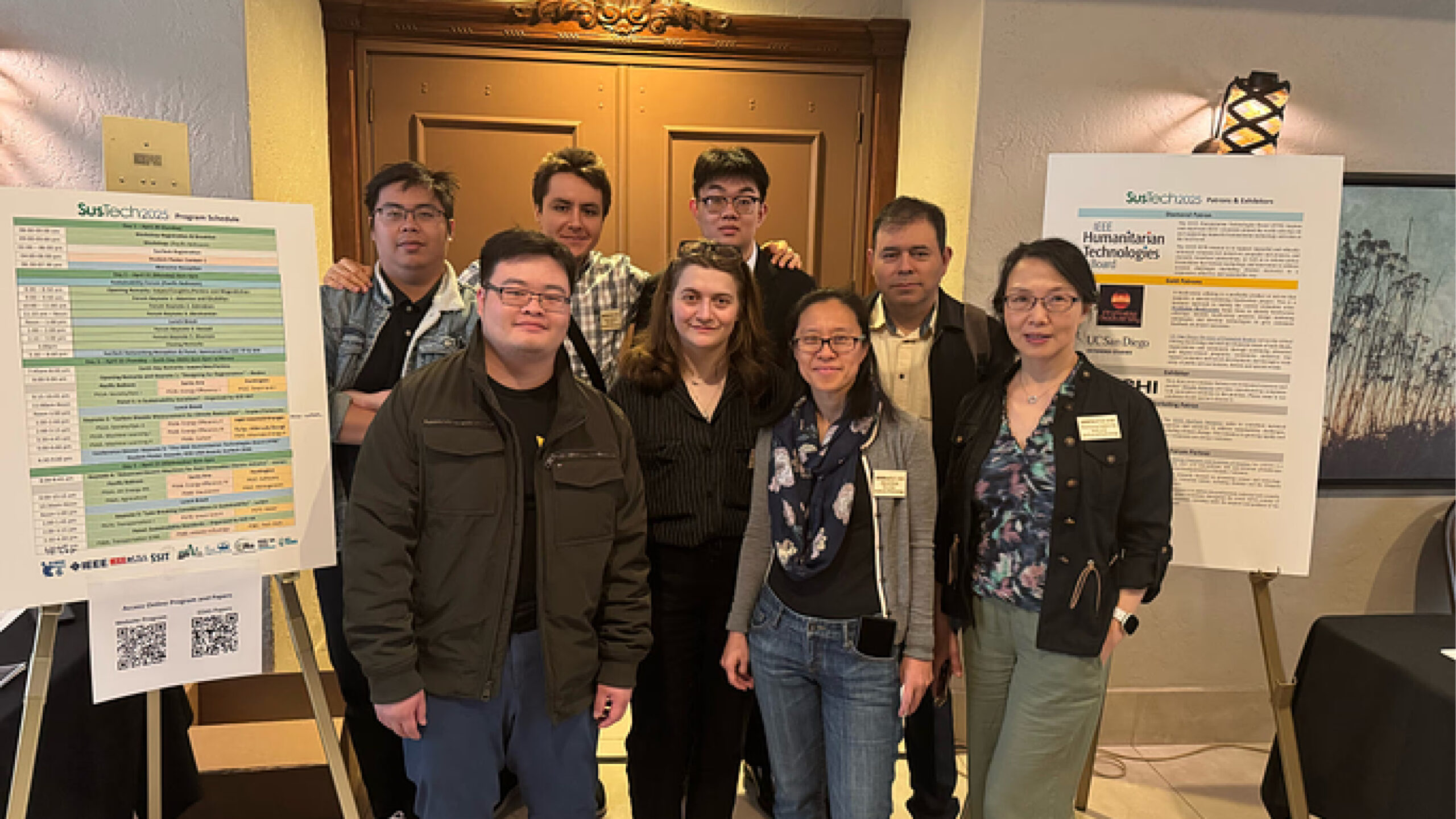
Now a team of faculty and student researchers in the College of Engineering and Computing Sciences has published new findings that demonstrate how artificial intelligence (AI) can be used to improve sustainability efforts in New York City and beyond.
As seen in IEEE Xplore in June, researchers in the college’s Network and Innovation Lab have identified methods to improve flood preparedness and urban resilience and sustainability in New York City’s five boroughs.
“The growing impacts of climate change, including increased flooding, pose urgent challenges for urban communities,” says principal investigator Ziqian (Cecilia) Dong, Ph.D., professor of electrical and computer engineering. “Our goal is to help cities become more adaptive, sustainable, and equitable in the face of climate risks.”
Supported by Dong’s National Science Foundation funding—including an award for her ongoing City-as-Lab research coordination effort and RAPID flooding analysis project—the studies leverage AI-based machine learning models and web-based tools to map and visualize datasets on flash flooding, building energy efficiency, and fallen trees. The research team, which included a Ph.D. student and several graduate and undergraduate students, successfully demonstrated that the technology could allow city officials to make data-informed decisions and better prepare against urban environmental issues, including neighborhood-level energy efficiency, heat stress, and localized concerns, like downed trees, pests, and power outages.
Combating Flash Floods in New York City
In their paper, “Impact Analysis of Contributing Factors of NYC Flash Floods with Interpretable Machine Learning,” Engineering, Ph.D. candidate Yihan Xu, undergraduate computer science students Alan Yuan and Guang Wei Too, as well as undergraduate electrical and computer engineering major Yordan Nikolov, Dong, and Professor Roberto Rojas-Cessa from New Jersey Institute of Technology gathered environmental, geographic, infrastructure, demographic, and socioeconomic data from New York City. The team then used a machine learning algorithm and output-explaining function to analyze and interpret the contribution and importance of each factor in overall flood risk.
Their findings revealed that while environmental and geographic factors, including infrastructure deterioration, river morphology, and sediment supply, have a strong correlation with flood risk, socioeconomic factors, like median age, median house value, and race, also play an important role. Of note, areas with low-income housing and minority communities were found to have higher flood risks due to societal vulnerability, resource availability, and the ability to cope with and recover from floods. Population density and education levels also showed impact, as those with higher education tend to take more proactive steps to prepare for the growing threat of storms. Looking ahead, the team seeks to expand data collection to include more socioeconomic and natural environmental data. With a more comprehensive analysis of key risk factors, better flood prevention and mitigation strategies may take place.
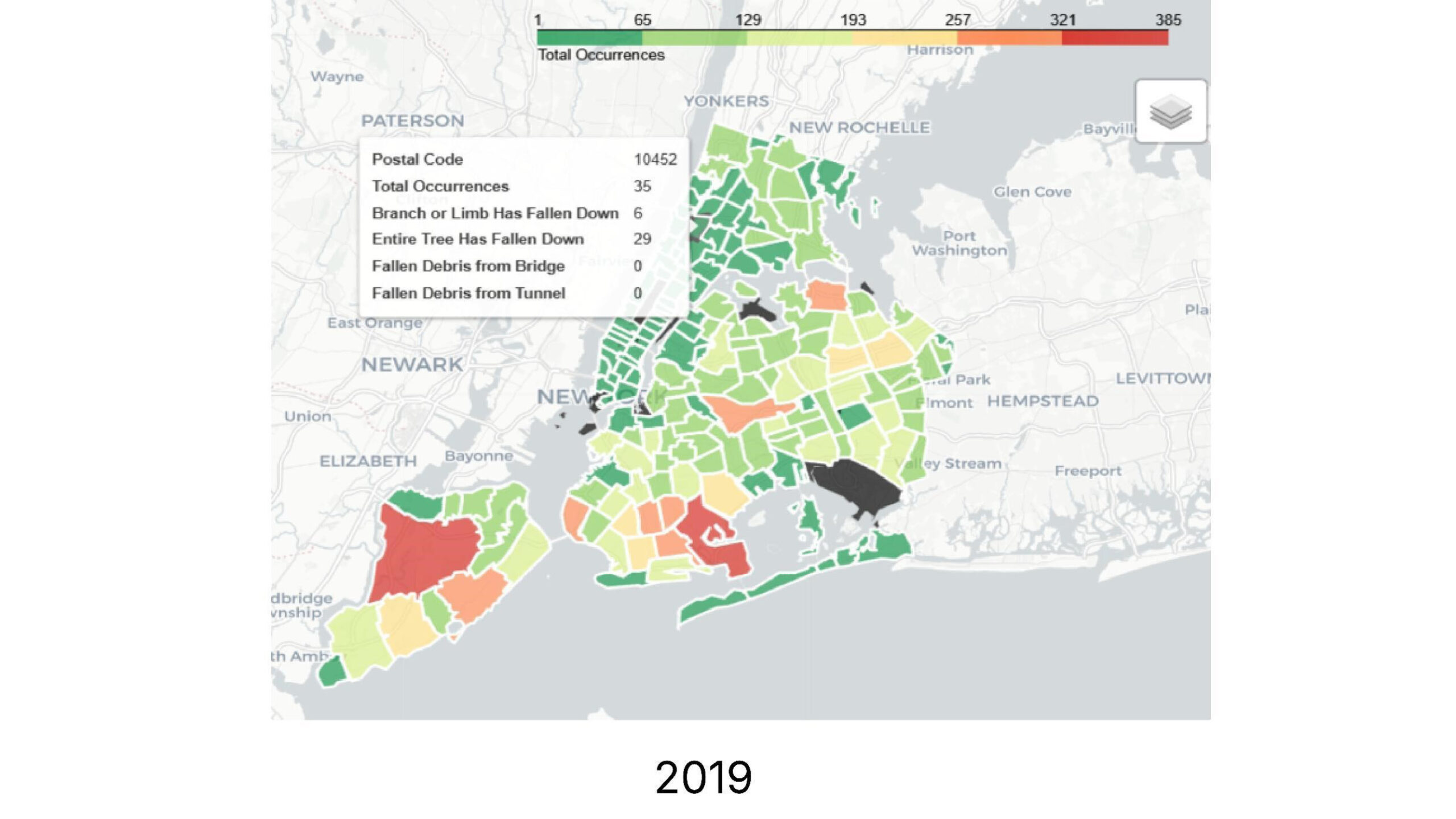
Making Urban Neighborhoods More Sustainable
In “Visualization Tool for NYC Open Data – A Time Lapse Analysis,” Yuan, Wei Too, Xu, Dong, Professor of Computer Science Huanying (Helen) Gu, Ph.D., and Rojas-Cessa published findings aimed at enhancing insights into urban sustainability in New York City.
The team leveraged publicly available data on building energy efficiency (via Energy Star scores) and fallen trees reported to the city. With the help of an interactive web-based tool, the data was used to generate an interactive, color-coded map, showing building energy efficiency and the impact of weather-related events in different city neighborhoods over time. Users can either explore data trends over time, making it easier to identify shifts and anomalies, or zoom in on ZIP codes or dropped pin locations to gain a deeper understanding of localized patterns. With geographic, demographic, and contextual data integration, users can analyze patterns and correlations between Energy Star scores and factors like location, building age, proximity to industrial zones, and access to renewable energy sources. Clusters of low scores in specific neighborhoods may indicate outdated infrastructure, lack of energy retrofitting, or socioeconomic barriers preventing upgrades. By mapping clusters of fallen trees, the tool not only reveals the substantial impact of climate-related events on urban settings but also provides practical insights that can help city parks better allocate resources during post-storm cleanups.
The Importance of Student Research
Applying learned skills to help solve real-world problems is critical to growth, says Dong, who welcomed Xu and Yuan as lead authors on the two papers. “Involving students in research has always been important to me. It’s incredibly rewarding to watch students grow into confident researchers and future leaders.”
For Xu, a New York City resident, this work hits closer to home. “I have witnessed how increasingly frequent flash floods are endangering the city,” he says. “I want to use my knowledge and research training to make useful tools for the community.”
Yuan notes that the process taught him how to embrace and adapt to challenges in research. “This experience showed me the true value of research, not only in terms of outcomes but also in the personal and academic growth it fosters.”
More News
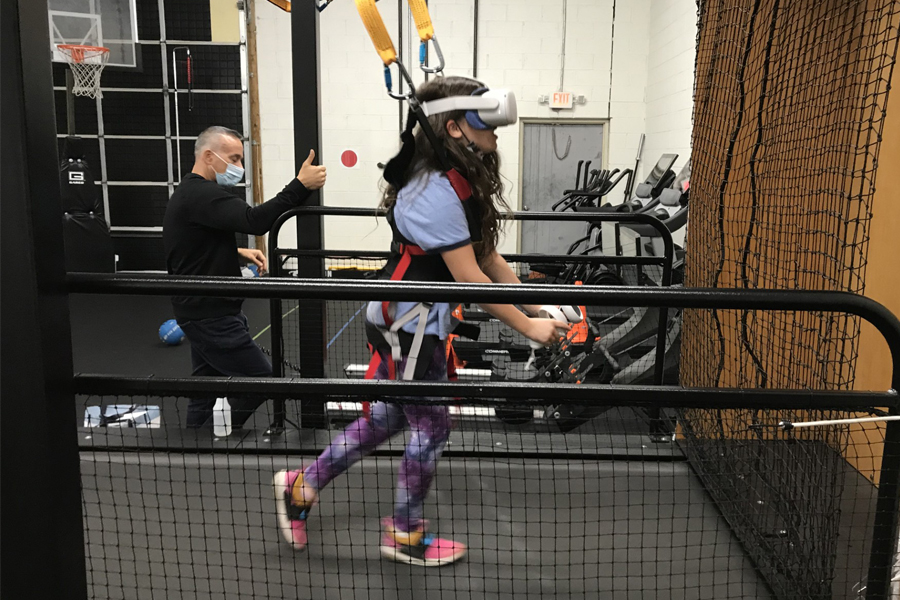
Study: VR Helps Children With Autism Participate in Exercise and Sports
A new study by researchers from the School of Health Professions and College of Osteopathic Medicine demonstrates how virtual reality (VR) can help children with autism spectrum disorder participate in exercise.
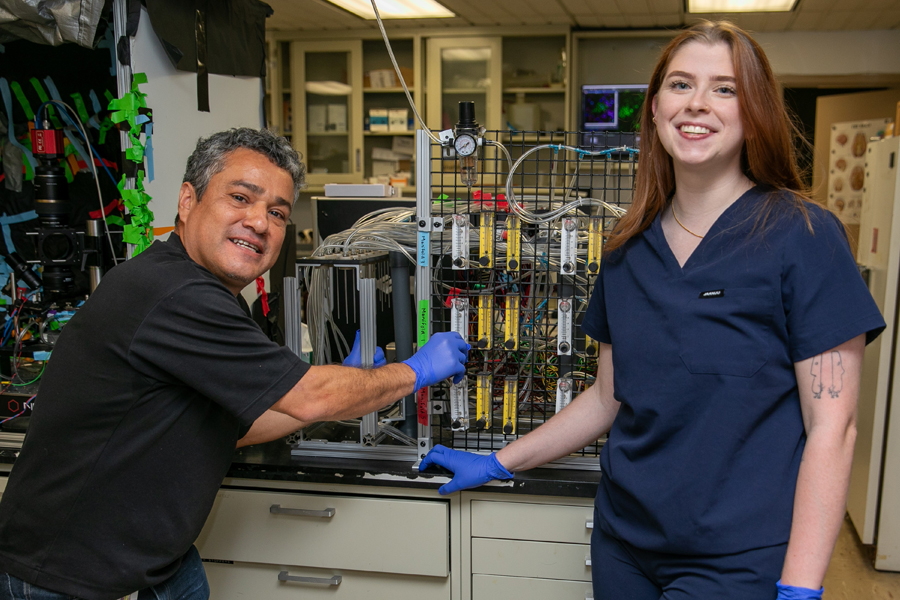
Driven by ‘Why’
Third-year medical student Kassandra Sturm leads the charge on a new study helping to uncover the neurological source affecting the sense of smell in autism spectrum disorder.

Technology Partnership Helps Children With Disfluencies
Former NBA star Michael Kidd-Gilchrist has partnered with the College of Engineering and Computing Sciences’ ETIC to develop a prototype of a technology platform that he hopes will help children who stutter.

Engineering a Cancer Treatment Game Changer
A groundbreaking project co-led by the College of Engineering and Computing Sciences’ Steven Zanganeh, Ph.D., provides the world’s first functional, drug-testable, 3-D-printed human colon model.
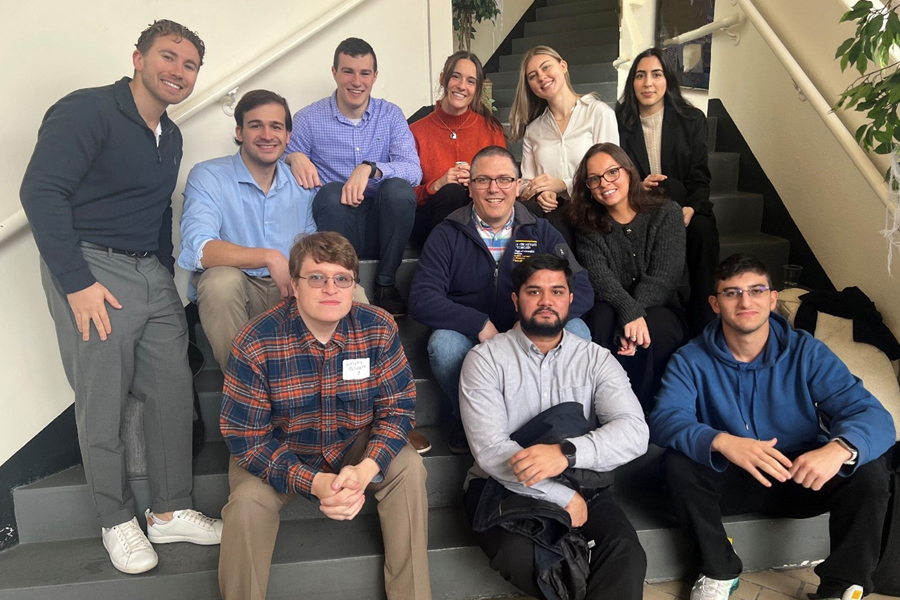
Gut Instincts: Solving Microscopic Mysteries
Research by NYITCOM Assistant Professor Vladimir Grubisic, M.D., Ph.D., aims to deliver findings that could pave the way for new treatments benefiting patients with gastrointestinal and neurological diseases.
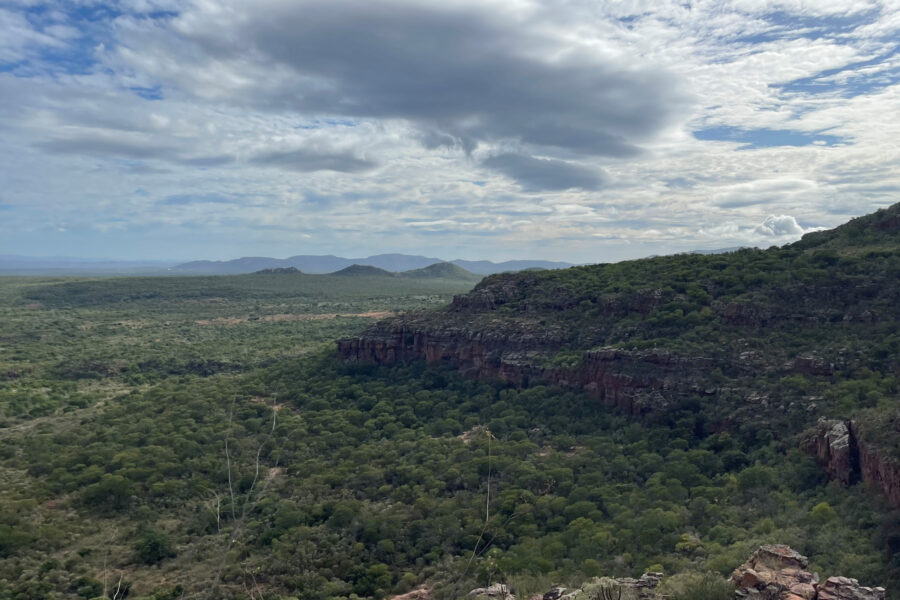
Edward Guiliano Global Fellows: Culture Across Continents
Under the Edward Guiliano Global Fellowship program, seven students traveled the globe, broadening their perspectives and working on transformational research projects.